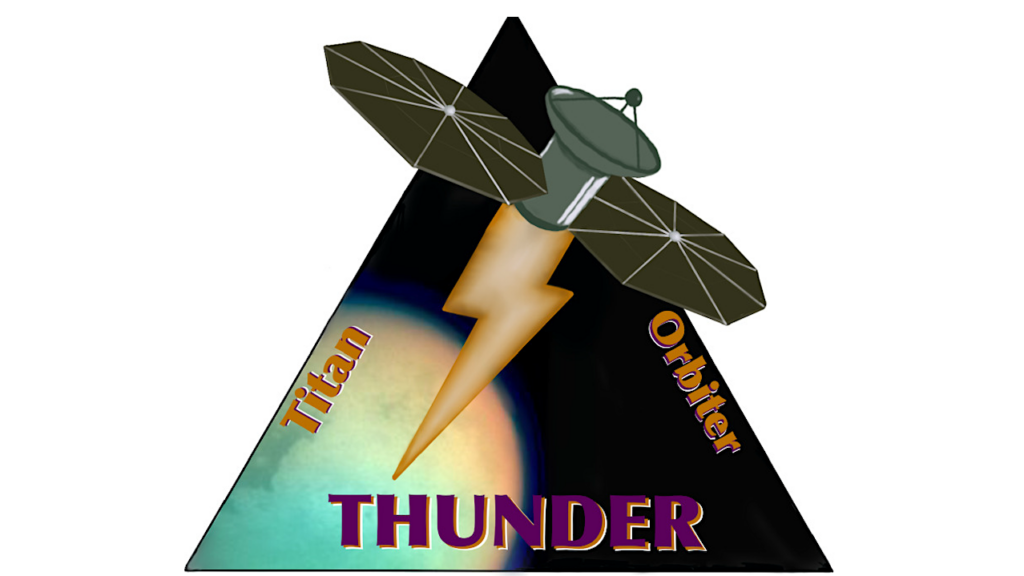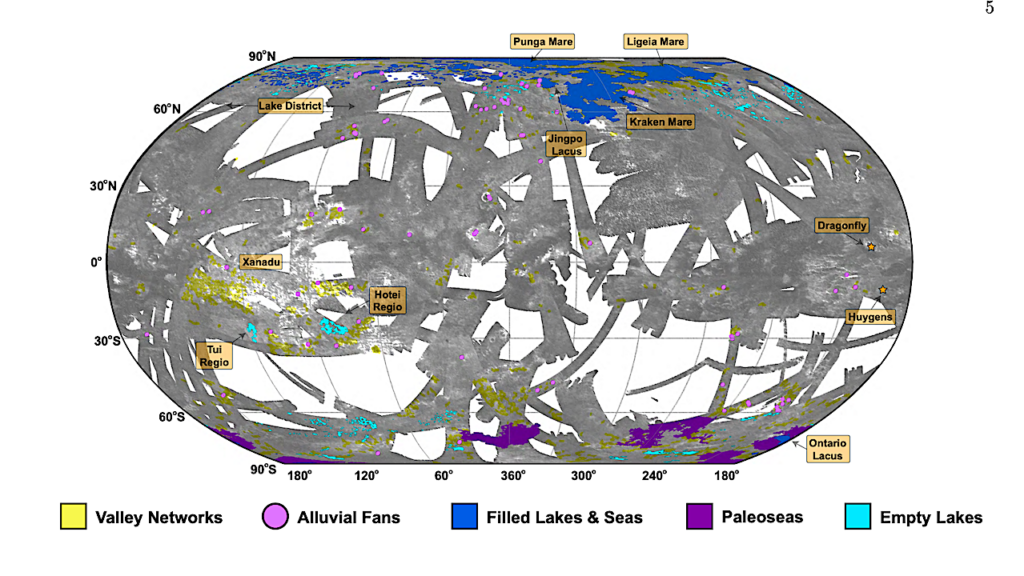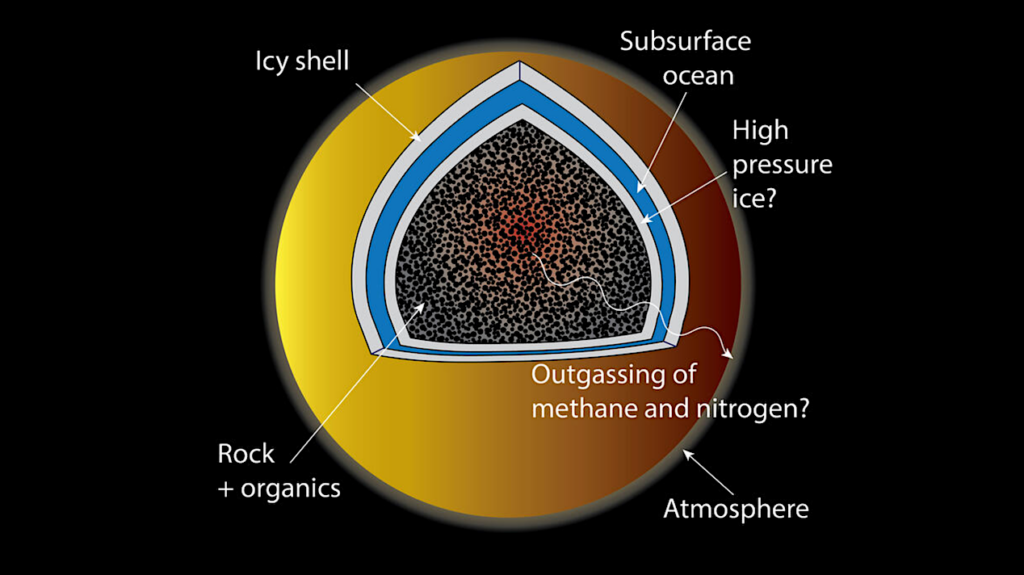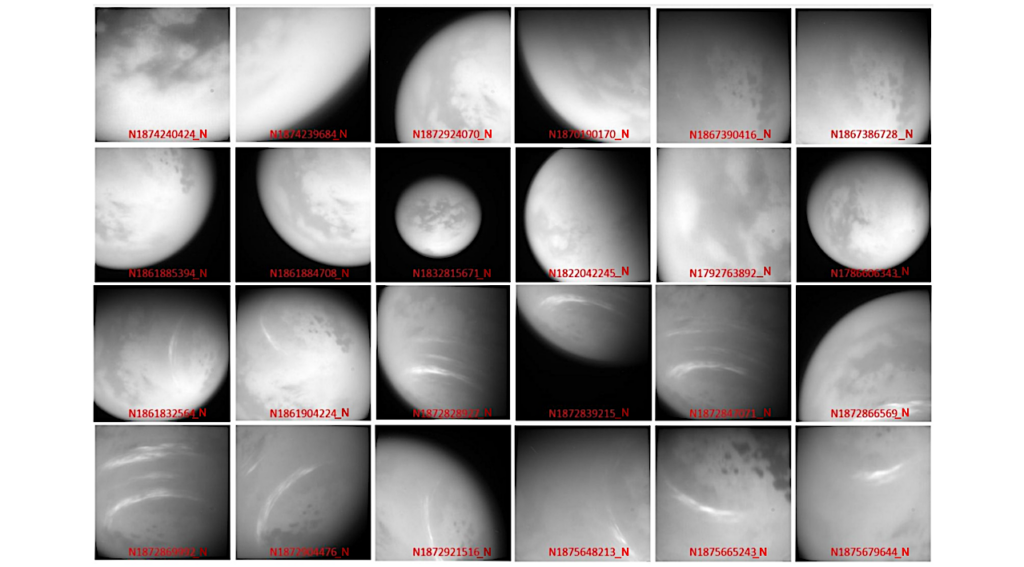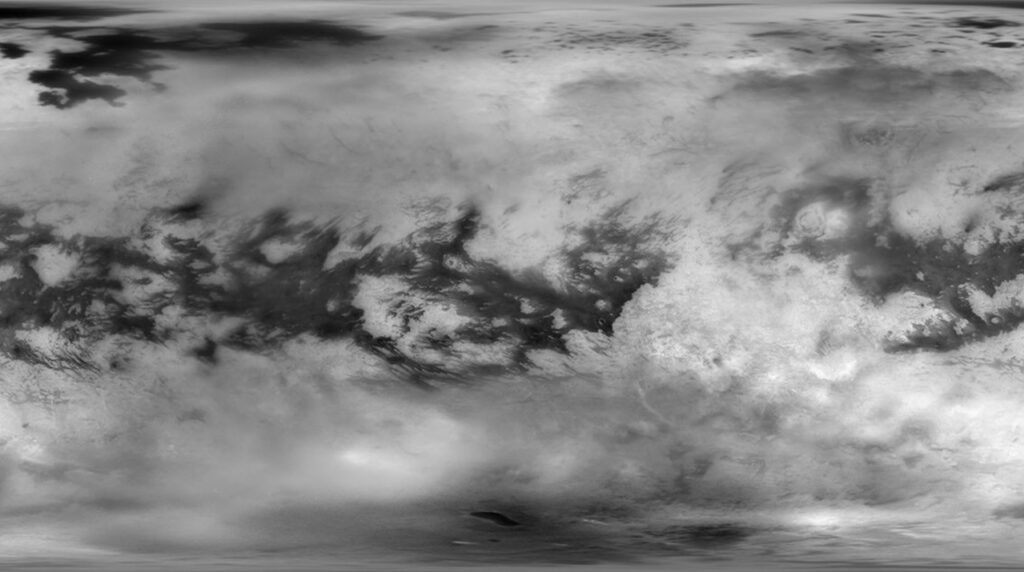The Science Case For A Titan Flagship-class Orbiter With Probes

We outline a flagship-class mission concept focused on studying Titan as a global system, with particular emphasis on the polar regions.
Investigating Titan from the unique standpoint of a polar orbit would enable comprehensive global maps to uncover the physics and chemistry of the atmosphere, and the topography and geophysical environment of the surface and subsurface. The mission includes two key elements: (1) an orbiter spacecraft, which also acts as a data relay, and (2) one or more small probes to directly investigate Titan’s seas and make the first direct measurements of their liquid composition and physical environment.
The orbiter would carry a sophisticated remote sensing payload, including a novel topographic lidar, a long-wavelength surface-penetrating radar, a sub-millimeter sounder for winds and for mesospheric/thermospheric composition, and a camera and near-infrared spectrometer. An instrument suite to analyze particles and fields would include a mass spectrometer to focus on the interactions between Titan’s escaping upper atmosphere and the solar wind and Saturnian magnetosphere.
The orbiter would enter a stable polar orbit around 1500 to 1800 km, from which vantage point it would make global maps of the atmosphere and surface. One or more probes, released from the orbiter, would investigate Titan’s seas in situ, including possible differences in composition between higher and lower latitude seas, as well as the atmosphere during the parachute descent. The number of probes, as well as the instrument complement on the orbiter and probe, remain to be finalized during a mission study that we recommend to NASA as part of the NRC Decadal Survey for Planetary Science now underway, with the goal of an overall mission cost in the “small flagship” category of ~$2 bn. International partnerships, similar to Cassini-Huygens, may also be included for consideration.
Conor A. Nixon, James Abshire, Andrew Ashton, Jason W. Barnes, Nathalie Carrasco, Mathieu Choukroun, Athena Coustenis, Louis-Alexandre Couston, Niklas Edberg, Alexander Gagnon, Jason D. Hofgartner, Luciano Iess, Stéphane Le Mouélic, Rosaly Lopes, Juan Lora, Ralph D. Lorenz, Adrienn Luspay-Kuti, Michael Malaska, Kathleen Mandt, Marco Mastrogiuseppe, Erwan Mazarico, Marc Neveu, Taylor Perron, Jani Radebaugh, Sébastien Rodriguez, Farid Salama, Ashley Schoenfeld, Jason M. Soderblom, Anezina Solomonidou, Darci Snowden, Xioali Sun, Nicholas Teanby, Gabriel Tobie, Melissa G. Trainer, Orenthal J. Tucker, Elizabeth P. Turtle, Sandrine Vinatier, Véronique Vuitton, Xi Zhang
Comments: 13 pages, white paper submitted to the NRC Decadal Survey for Planetary Science and Astrobiology
Subjects: Instrumentation and Methods for Astrophysics (astro-ph.IM); Earth and Planetary Astrophysics (astro-ph.EP)
Cite as: arXiv:2008.05680 [astro-ph.IM] (or arXiv:2008.05680v1 [astro-ph.IM] for this version)
Submission history
From: Conor Nixon
[v1] Thu, 13 Aug 2020 04:01:48 UTC (2,345 KB)
https://arxiv.org/abs/2008.05680
Astrobiology


